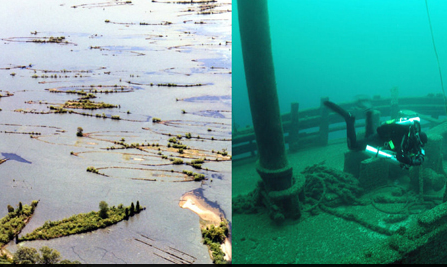
Yesterday, President Obama announced the designation of two new marine sanctuaries, one in Wisconsin and one in Maryland, as part of his video greeting to the “2015 Our Ocean Conference” in Chile.

(President Obama to the 2015 Our Ocean Conference: Click image to view video)
Today, in a video message to the “Our Ocean” conference participants in Chile, President Obama will announce that the Administration is taking the next steps to create two new marine sanctuaries – one in the tidal waters of Maryland, and one in Wisconsin’s Lake Michigan waters. He will also announce new steps to tackle illegal fishing. During the closing of the conference, the State Department will announce additional steps and commitments from the United States and other governments and partners from around the world to protect our oceans.

Across the country, Americans depend on the ocean for food, jobs, and recreation. However, our ocean and marine ecosystems are increasingly threatened. Climate change is causing sea levels and ocean temperatures to rise. Changing temperatures harm coral reefs and force certain species to migrate. In addition, carbon pollution is being absorbed by the oceans, causing them to acidify, which damages coastal shellfish beds and reefs, altering entire marine ecosystems. Currently, the rate of acidification of our oceans is increasing 10 to 100 times faster than any time in the past 55 million years.
This week, Chile is hosting the second “Our Ocean” conference to bring the nations of the world together to address these challenges. The U.S. State Department hosted the first version of the conference in 2014 pledging to promote sustainable fisheries, reduce marine pollution, and stem ocean acidification.
Fact Sheet: Preserving and Protecting Oceans and America’s Waterways for Future Generations
Today the President will announce that the National Oceanic and Atmospheric Administration (NOAA) is moving forward to designate the first new National Marine Sanctuaries since 2000, one in Maryland and the other in the Great Lakes.
• Wisconsin’s Lake Michigan. In Wisconsin, an 875-square mile area of Lake Michigan, with waters extending from Port Washington to Two Rivers was nominated by the Governor for sanctuary protection, and the nomination was endorsed by a diverse coalition of organizations and individuals at local, state, regional and national levels including elected officials, businesses, environmental, recreation, conservation, fishing and tourism groups, museums, historical societies and education groups. The area contains a collection of 39 known shipwrecks, 15 of which are listed on the National Register of Historic Places. Fifteen of the known shipwrecks are essentially intact, and three vessels possess standing masts – a rarity in the Great Lakes.
• Mallows Bay-Potomac River. Mallows Bay-Potomac River in Maryland is a 14-square mile area of the tidal Potomac River, adjacent to Charles County. Nearly 200 vessels spanning from the Revolutionary War through the present are found in the area, including the remains of the largest “Ghost Fleet” of World War I wooden steamships built for the U.S. Emergency Fleet, which are listed on the National Register of Historic Places. Mallows Bay is largely undeveloped and has been identified as one of the most ecologically valuable in Maryland providing important habitat for fish and wildlife, including rare, threatened, and endangered species. Mallows Bay-Potomac River was nominated by the former Governor of Maryland in September 2014, and the nomination was endorsed by a diverse coalition of local, state, regional and national groups.
Last year, the Administration gave Americans the opportunity to nominate nationally significant marine and Great Lakes areas as national marine sanctuaries for the first time in 20 years. Since NOAA re-opened the public nomination process, seven submissions have been put forward by communities interested in protecting significant marine areas. Many of these nominations have included hundreds of support letters from a wide variety of stakeholders. The proposed sanctuary sites will be open for public comment now through January 15, 2016.


I’ve been to the Lake Michigan shoreline and it is deserving of preservation.
Thank you, President Obama, for your Good Government initiatives to preserve and protect our nation’s waterways.
From ThinkProgress: Obama Just Announced Plans To Create The First Marine Sanctuaries In More Than A Decade